I have a an Apricot tree living on my property that was once part of an orchard - one of many that used to exist here in the Santa Clara Valley. It's very old but doing pretty well considering everything that has changed around it. Even if this tree was just a volunteer sapling that sprouted when the lot was cleared in the early 1950's, it would still be 75 years old. I think it is most likely an original orchard tree from seeing its size in photographs taken in the 1960s.
One day I got it in my head that it was possible to preserve this tree indefinitely by grafting it to new rootstock. I didn't quite understand how the genetics worked ( more on that later ), but I still wanted to learn about grafting because it seemed just like cool old-timey know-how.
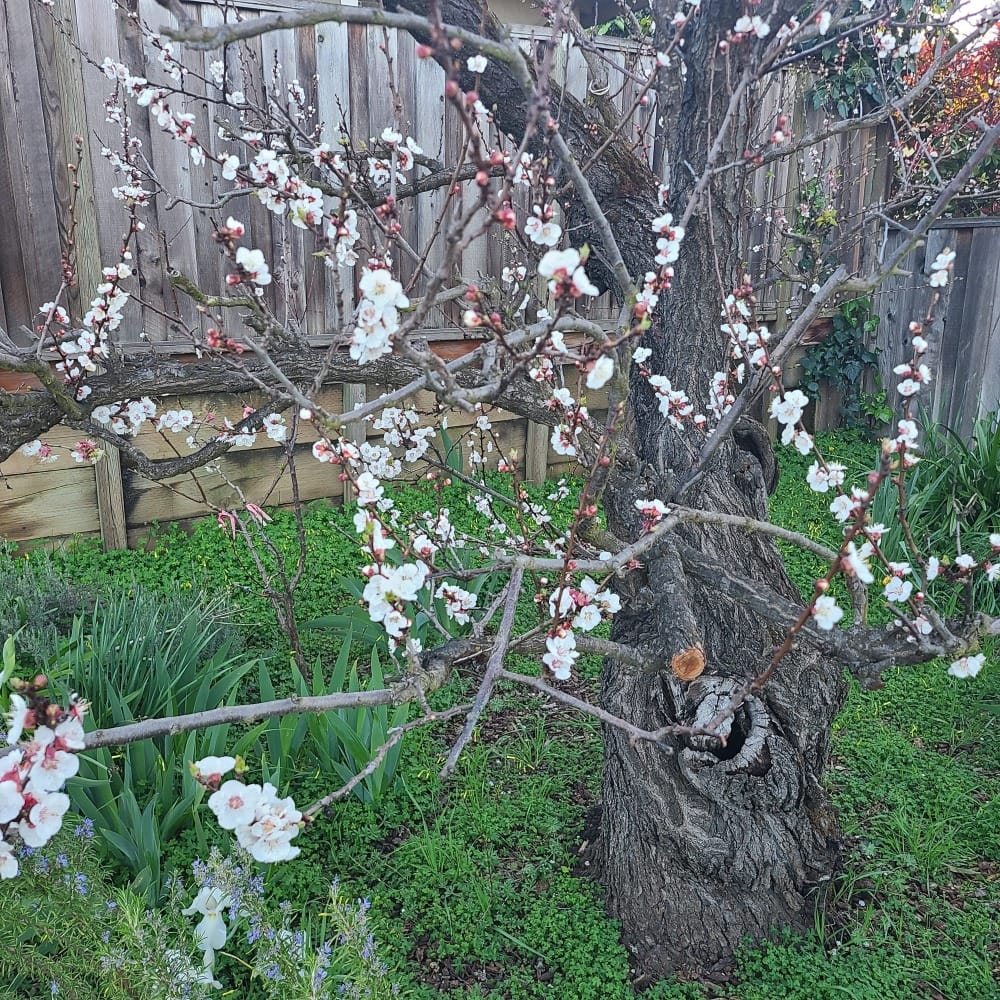
What is Grafting?
Grafting is the joining of two plants together into one that has the desirable properties of both. Usually a strong and disease resistant rootstock is paired with a scion ( or "budwood" ) from a similar plant specimen with unique genetic qualities.
Fruit genetics is an interesting topic with huge commercial implications. I heard once that 1 in 10,000 wild-grown apples would taste sweet. The truth is that most trees sprouted from the fruit of a known cultivar will produce inferior fruit than their parent. ( Or, at least not "true" to their parent ) Commercially-grown varieties are carefully selected - and then grafted infinitely to standardize the crop.
Take a moment to consider that (basically) all the bananas you've ever eaten are clones of each other.
On the contrary, the original Hass Avocado tree was grown as a rootstock but refused to accept any grafts so the grower (Hass) allowed it to mature and accidentally discovered a new variety. This is the flip side of the coin: grafting is the opposite of promoting genetic diversity. Sprouting new seeds is the only way to roll the genetic dice and possibly create something new. I do this with my tomato plants every year, but they're more likely to produce something interesting and edible, and only last a season. It's too much of a gamble to take on a tree that will hopefully produce for decades.
Humans have been toying with plants for several thousand years for our own benefit but I still find it amazing that we figured our grafting. I wonder if there is an example of plant grafting in the wild that served as the inspiration for the idea, or even if humans observed animals doing it first. It just seems like a long-shot idea that would require a lot of patience and follow-through for any success at all.
Honestly it is so cool that is still strikes people as some kind of magic. The scientific study of how grafting works is interesting, but possibly not as interesting as the fact that it works at all. I can't decide whether it is a bug or a feature of the universe. Plants need to exercise their ability to heal but as humans we found a way to exploit that powerfully.
My Experience with Grafting
In 2021 I purchased ten rootstocks from Burn Ridge Nursery, but realized that it was too late in the season to have collected scion wood so I would have to wait a year. I potted them each in a gallon container since they would be waiting awhile. I went with a plum rootstock called Prunus Myrobalan - apparently a good choice for apricots.
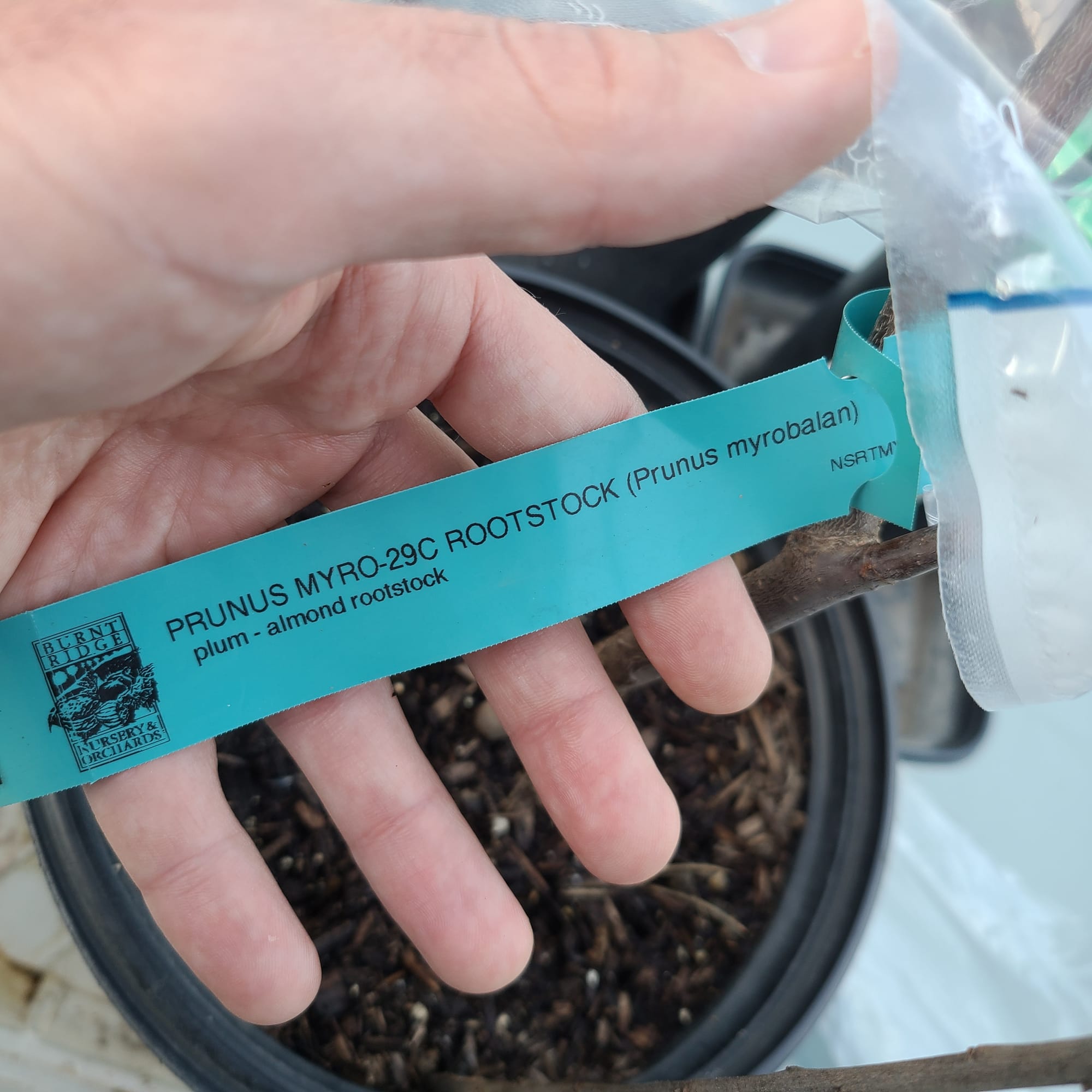
I collected scion wood was in the winter of 2021-2022. I stored it double-wrapped in plastic in the refrigerator for a few months waiting for things to start warming up.
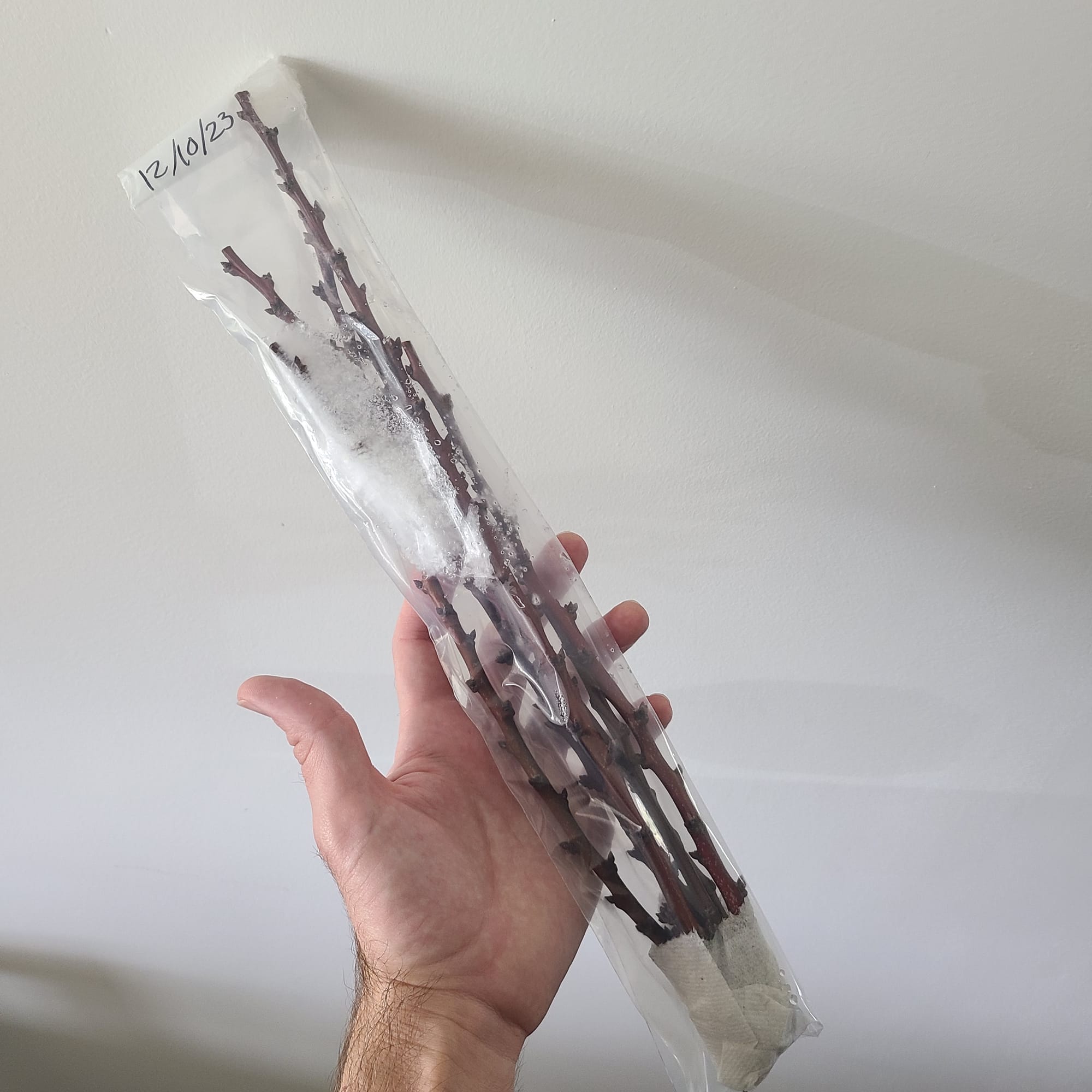
I watched a ton of YouTube videos learning about the different kind of graft cuts I could make. I decided to do whip-and-tongue and practiced on some of the leftover pruned growth from the tree.
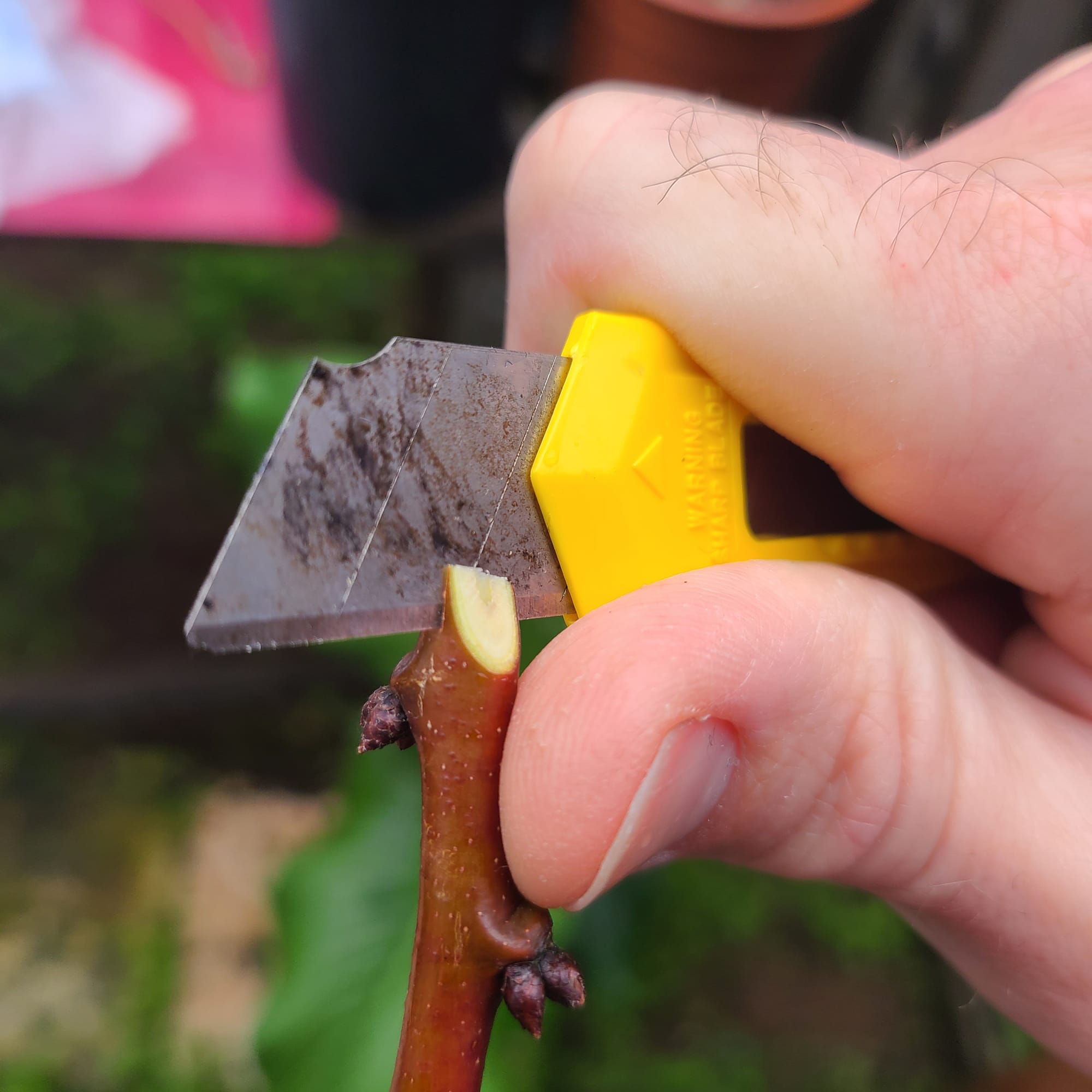
This is a technique thing for sure. Following a few rules has helped me avoid probably a hundred ways to cut myself badly when doing this. To make it worse most professionals recommend your grafting knife should be 'scary sharp'. As you can see I'm just using a box cutter. Yes, I wipe it with alcohol sometimes, but I should do that more often.
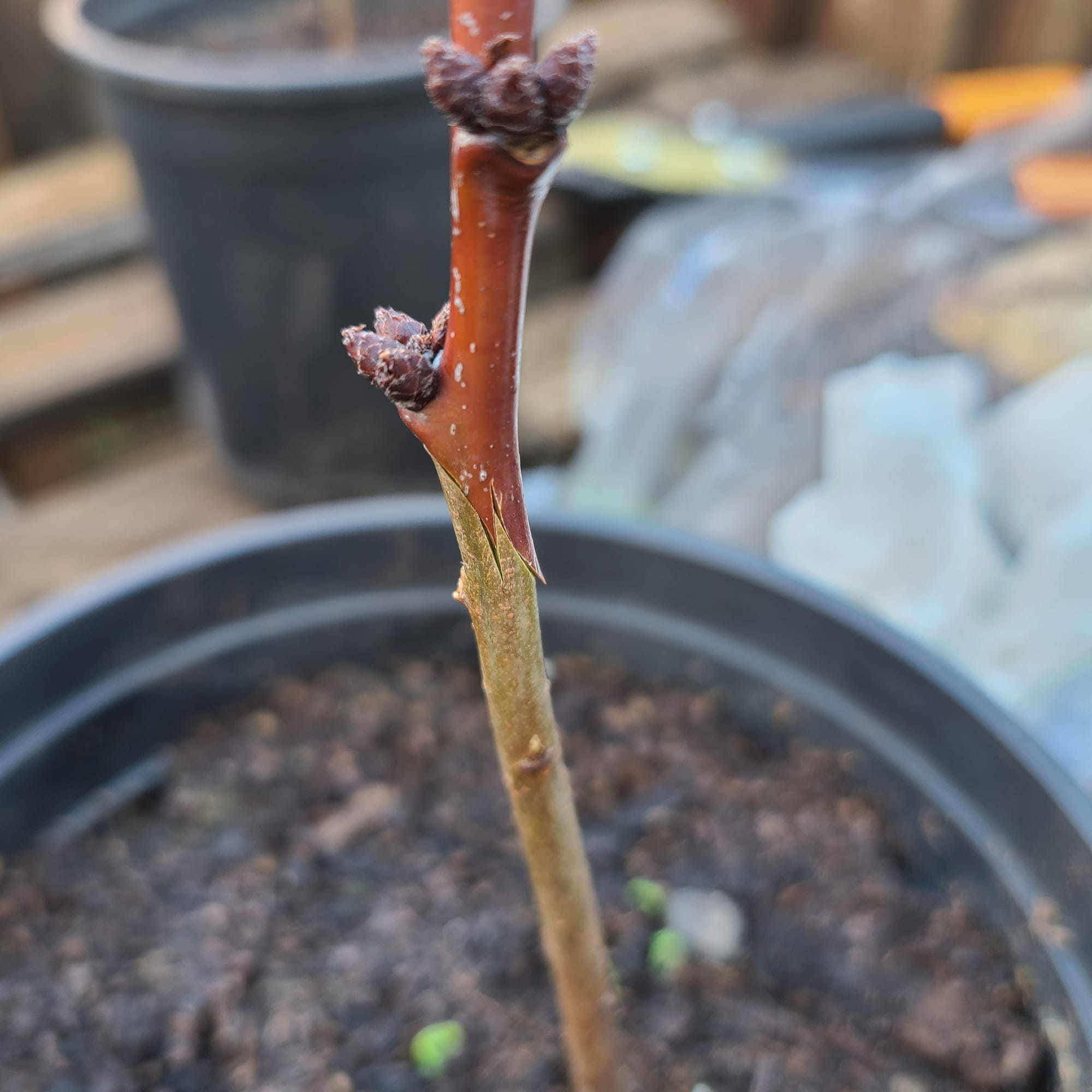
Look at all of that cambium-contact! I wrapped each graft in grafting "tape" ( in 2022 I think I just used kitchen wrap ) to put compression on the union and seal in moisture. Keeping the scion from drying out until it can get help through the healed graft union is critical. Tightly wrapping the entire scion with tape and putting an extra plastic bag over the whole union and scion also help retain moisture.
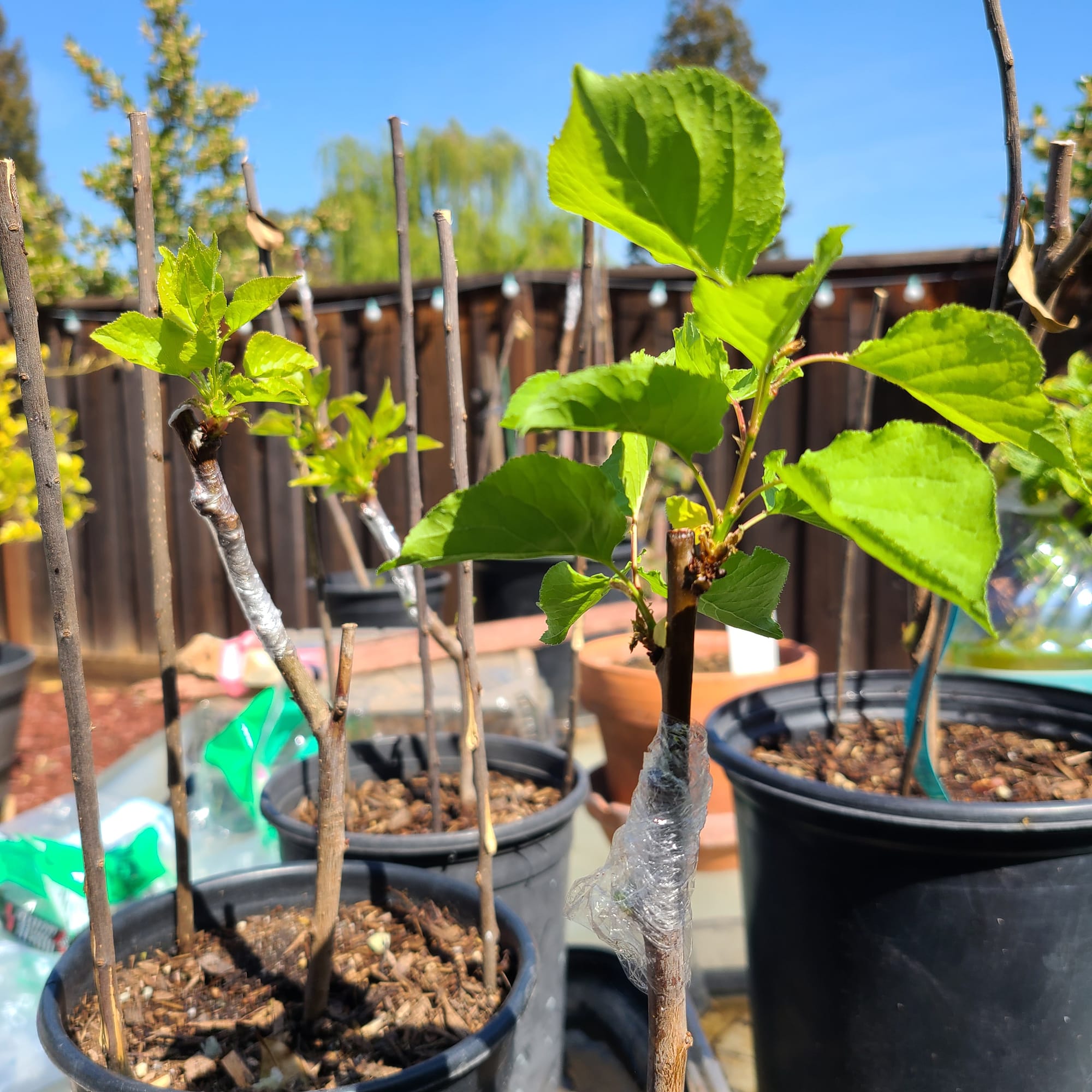
It's fun to watch as each graft takes, or doesn't. With the apricots, sometimes a few buds will flower but then none turn into new branches.
This is a good time to mention that a professional would get 85% or more success. I tried again with 10 more Lovell Peach rootstocks in 2023 and none of them worked. I even retried with a few leftover rootstocks from previous failed grafts. I'm about 3 for 24, so, not a professional.
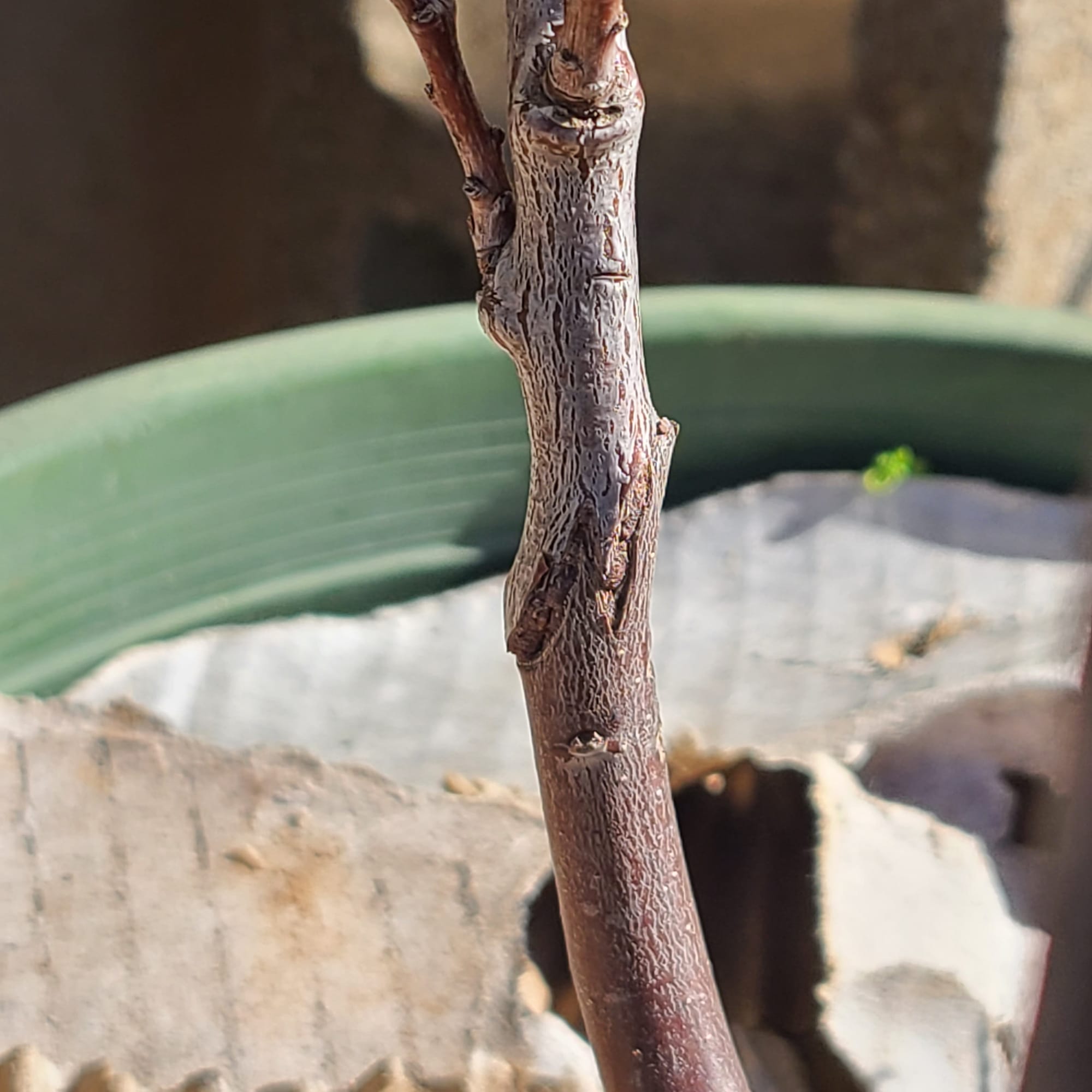
In retrospect, I think it would have been easier to plant the rootstocks first so they could start developing healthy root systems before supporting a graft. I tried some practice grafts on some volunteer apricot trees around the yard and had a much better success rate, despite the uncontrolled outdoor conditions. ( Genetic-compatibility is also a factor )
Basic grafting steps ( saddle, whip-and-tongue, cleft, etc )
- Select compatible rootstock and scion varieties
- Cut each at the appropriate diameter to ensure contact of the cambium layer
- Wrap the top 2/3 of the scion with tape leaving room to make grafting cuts
- Make graft union cuts and join the scion to rootstock
- Tightly wrap the graft union with tape, add more where necessary
- Additional steps to help healing: Put a plastic bag over the whole thing, move out of direct sunlight and into a warm, stable temperature
- Wait 5 or more weeks, resist the urge to remove bags or tape early
Those principles apply for avocados also, but I'm waiting to have more success with those before claiming to know what I'm talking about.
What am I really accomplishing?
It took me longer than it should have to realize my misunderstanding with what I was accomplishing. Originally I thought that by grafting my old orchard tree that I would be preserving something unique. However, this area was known to be planted with Blenheim apricots, which could have only been planted as grafted trees. So in reality it is hardly unique - it is already a genetic clone!
I've been cloning from a clone all along. It turns out that this is exactly how the agricultural world goes around - cloning what works - potentially to an extreme extent ( bananas, again )
Is grafting a Blenheim even legal? It definitely is not with some varieties, but I also didn't sell the grafted trees and don't sell my fruit. More research needed there!
Starting the Orchard
Digging holes is real work. Especially in this clay. It would have taken serious machinery to out-dig me though. Each tree got its own custom gopher basked fashioned out of chicken wire.
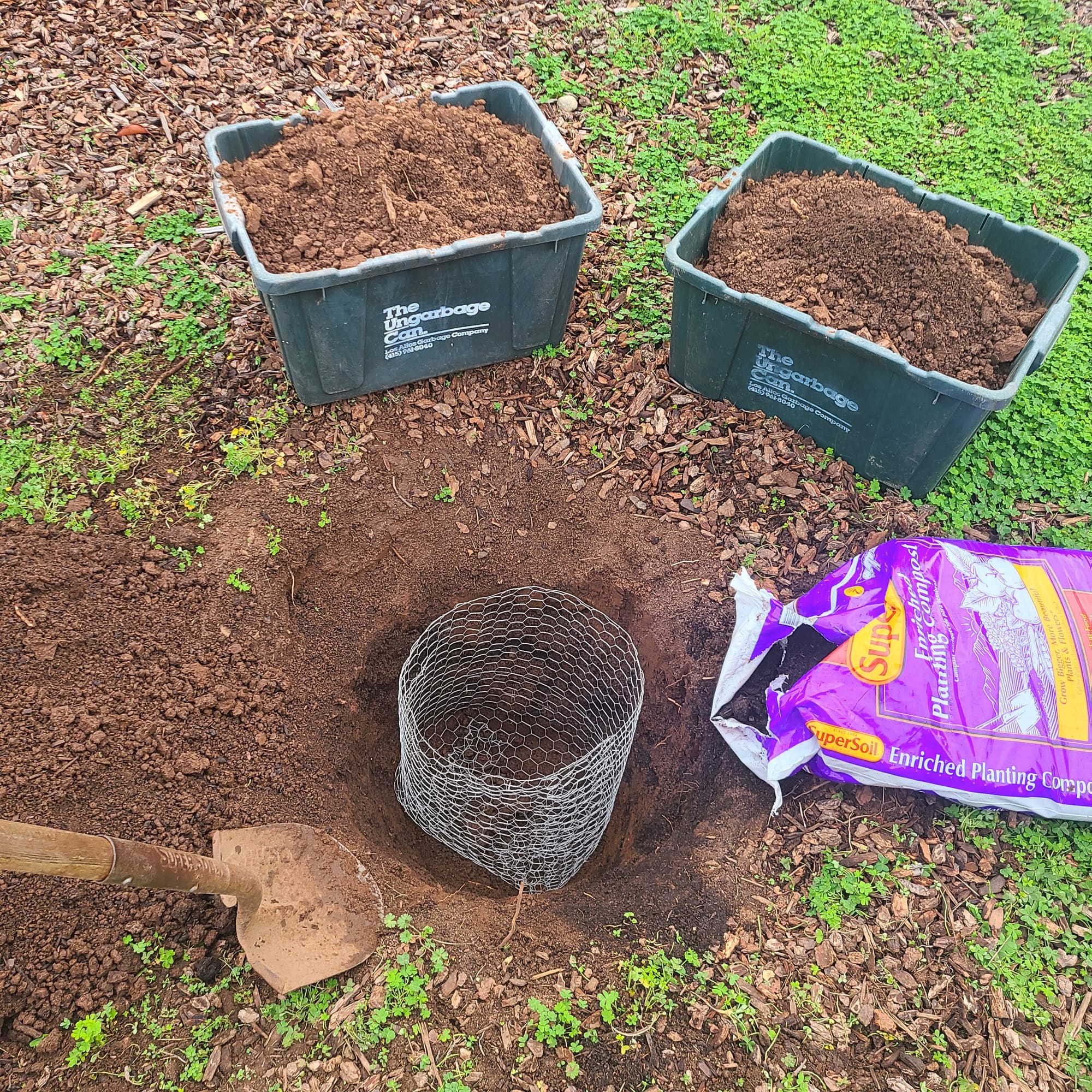
Gopher basket assumptions:
- Standard chicken wire ( 3/4" hole size ) will stop gophers - this is debated
- Un-galvanized chicken wire will rust and disintegrate in 3-5 years
- After 3-5 years the tree will be resilient against gopher attack
The holes were all dug and ready just in time - the buds were just starting to swell on my 3 precious trees that were waiting patiently in 2-gallon pots. Anything larger would have been nearly impossible to invert and handle while placing into the hole. I see now why fruit trees are sold in those cardboard pots.
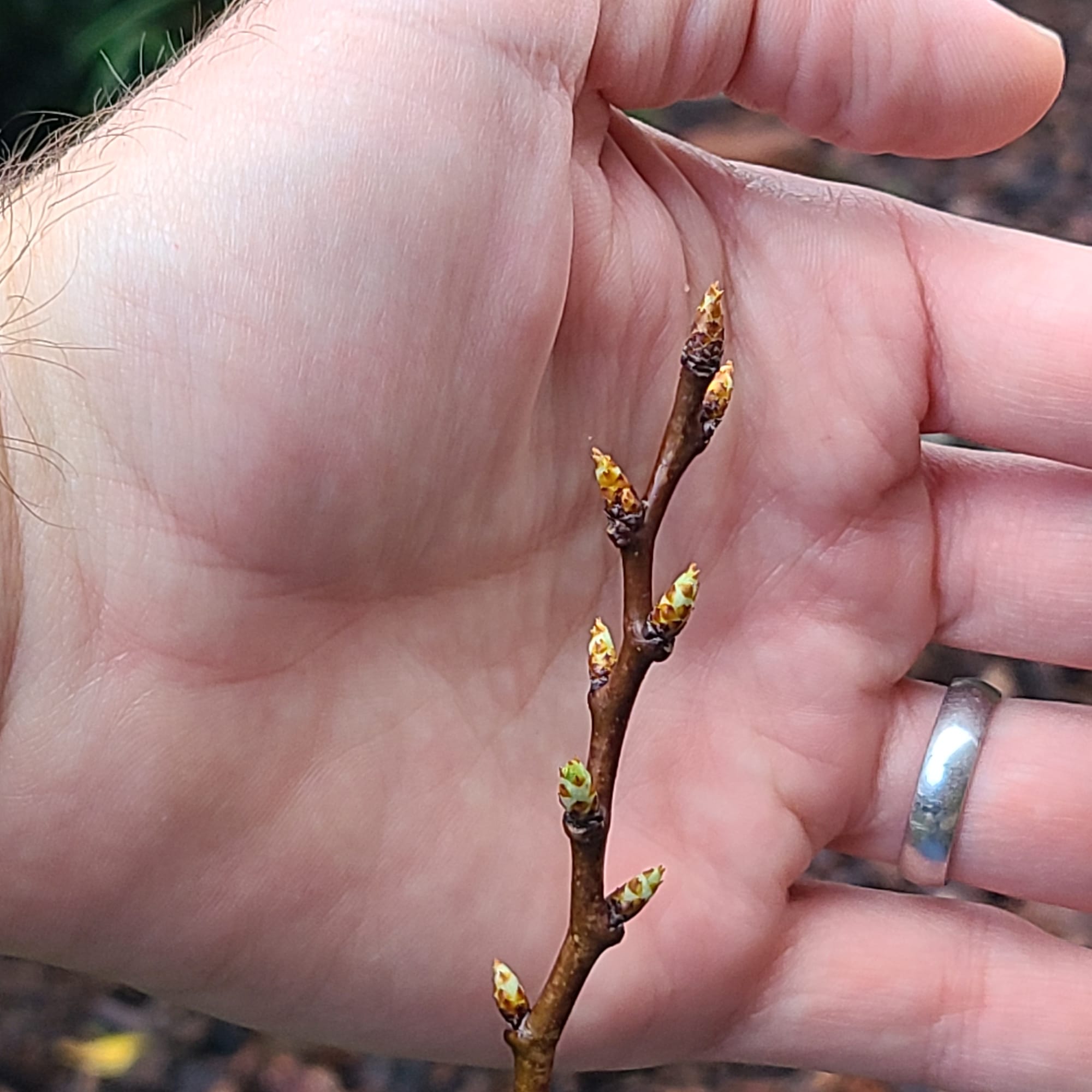
Irrigation
I was going to write a whole boring section about the irrigation but basically all the trees are watered off one valve. 1/4" tubing is buried within the mound surrounding each tree. I was trying to simplify and avoid connecting a bunch of emitters so I just stabbed holes. In my mind this seems scalable - I'll just widen the circle as the tree grows.
I ran some timed tests filling a gallon jug to calculate a rough flow rate. Hopefully all the tubes were equally stabbed 😄. In my defense I was working in a hurry and got all this done in about an hour.
So far this appears to work but real summer heat will be the ultimate test. I also need to add lots of mulch to block sunlight, trap in moisture, and keep things cool down there.
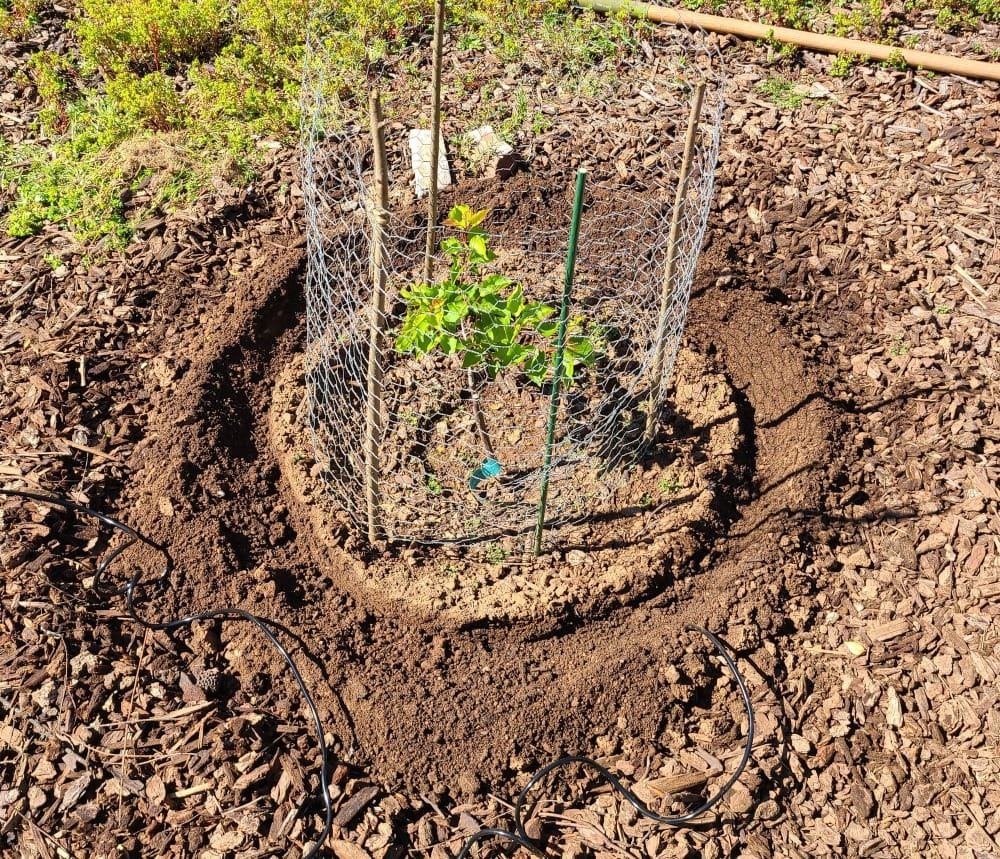
Final Thoughts
The original tree also led me to Robin Chapman's book "California Apricots: The Lost Orchards of Silicon Valley". It gave me a new perspective on what things were like here around when my old tree was planted.
I also have to mention that the original tree has made it this long because my dad took care of it for many years and continues to help me. Apricots take attention every year.
I feel that I've accomplished orchard continuity - although it all depends on your definition of an orchard. The one tree on my property that was planted as an orchard tree now has several companions that were also planted as orchard trees - so this is definitely an orchard, right?
But is it the same orchard ... ?
Updates will follow!


